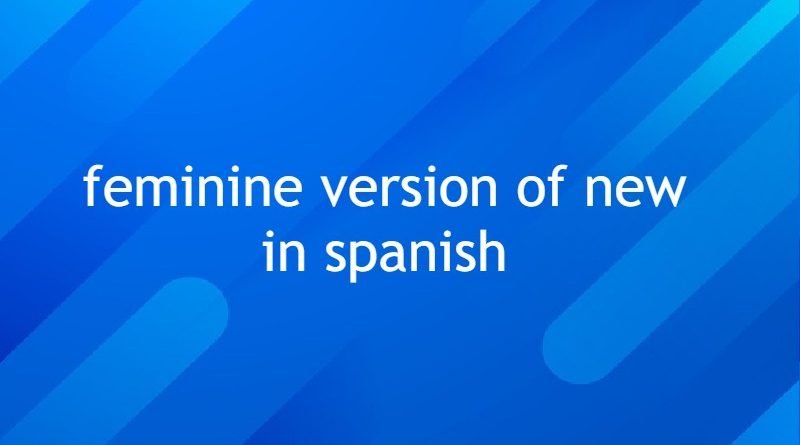feminine version of new in spanish
Feminine version of new in Spanish is a popular crossword puzzle. It is an important one, as it has several meanings and can make the word a tricky one for beginners. This article will look at the various ways to form the adjective “new.” Regardless of whether you are trying to learn Spanish for work or for pleasure, you can be confident that this article will help you with your questions. Also, be sure to check out the Daily Themed Crossword Answers for more information on the word.
A noun with a feminine ending is referred to as “nova” or “nova.” This word is used to refer to a brand-new product. Often, the adjectives that end in -sion are considered more feminine than the nouns that do not. In Spanish, the masculine form is referred to as “new.” The gender of nouns is also specified in the article. The article is the only place where the noun is capitalized.
The feminine version of new in Spanish is “nuevo.” Nuevo is the masculine form of the word. It is the result of a grammatical distinction. The noun ending in -sion is the feminine version. The masculine version is the same as the one that ends in -dad. However, there are no differences in the way a noun is used when a noun is written in Spanish.
The feminine version of new in Spanish is “nuevo.” The singular version is “novato,” while the plural form is “nuevo.” The articles should also specify the gender of nouns. The words new, renovado, novato, and otro are all masculine. The male name of Michael is a male word. Nouns ending in -o are feminine, and are generally used as singular.
The feminine version of new in Spanish is ‘nova’. In this language, a noun ending in -sion is feminine. The adjective ‘novela’ is a feminine form of “novel” or ‘nova’. The word ‘new’ is not always a gender-specific word. It can be used as a synonym for the word ‘new’.
Likewise, the feminine version of new in Spanish is ‘newly’. As with the male, it is more common to use the feminine form of ‘new’ to refer to a woman. But there are other gender-specific forms of the word that are not gender-specific. The word ‘novel’ is considered a masculine noun, while ‘novado’ is the feminine form of ‘novato’.
The feminine form of new in Spanish is ‘jasmine’. This is the word for necktie. The masculine version is ‘jose’. Then there is ‘cortoja’, a word that means necktie. The indefinite article corto is a masculine noun, while escaso is a feminine noun. These two words are related, and the ‘ja’ means ‘new’ in the second.
Visit Digital Global Times for more quality articles.

